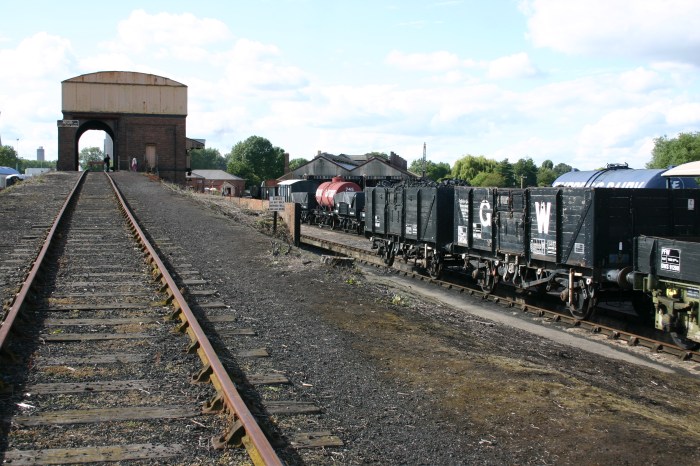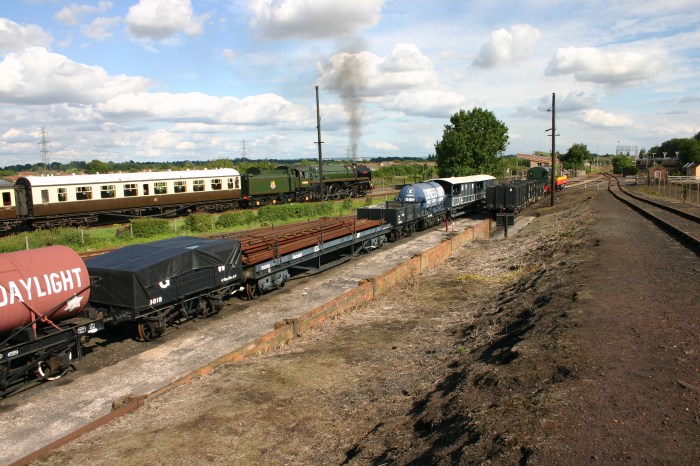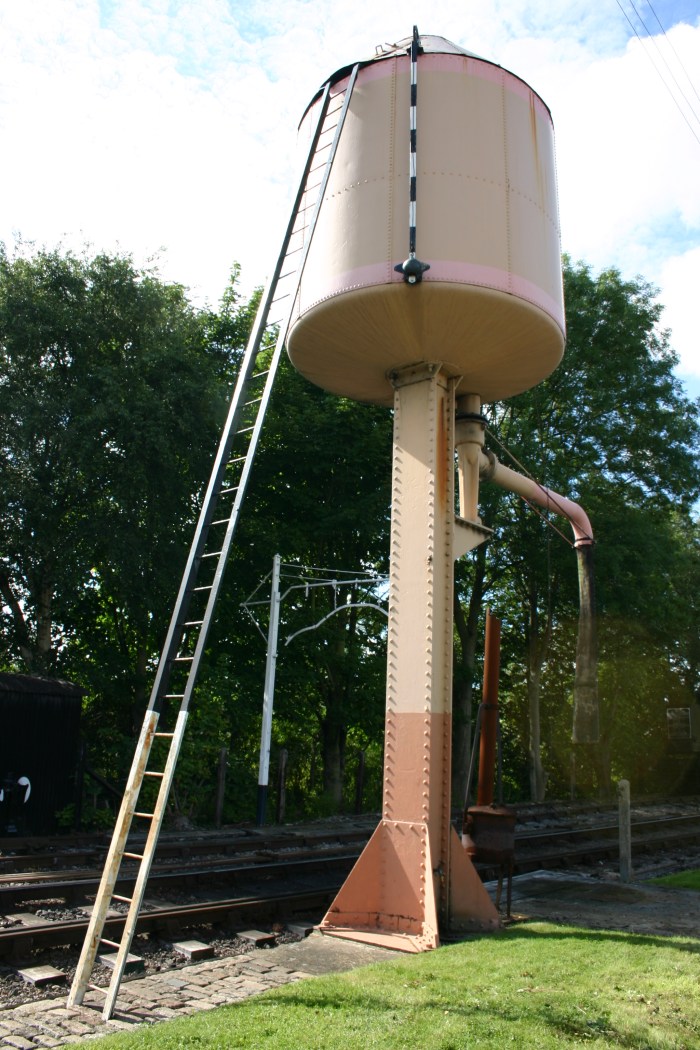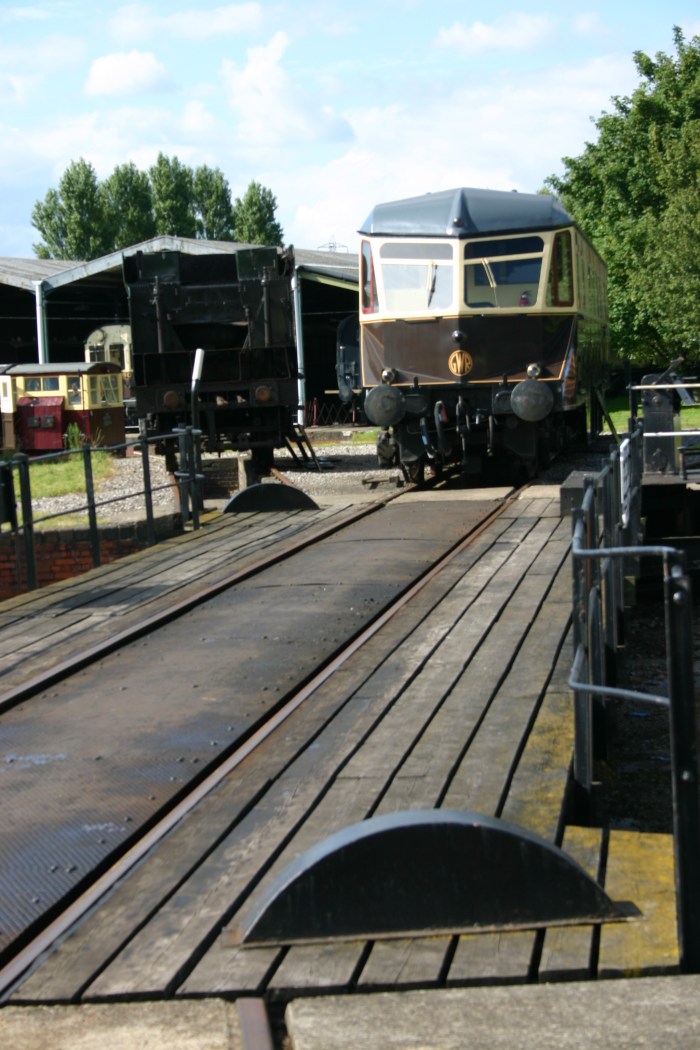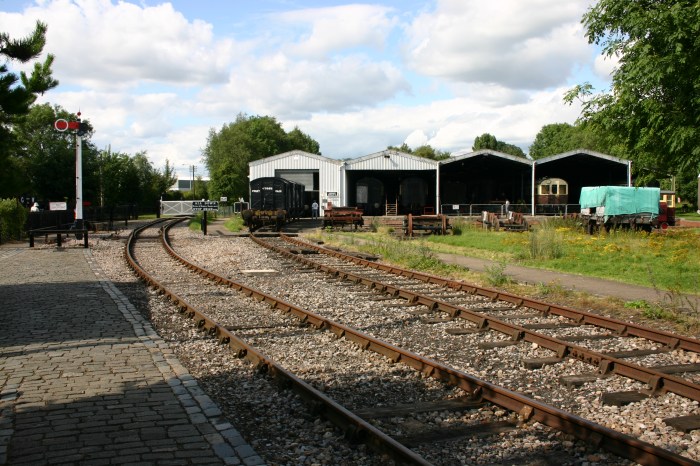Following from my previous post on BR standard 7MT 70000 Britannia, I had a very enjoyable flying visit to Didcot Railway Centre on Wednesday and wanted to write a quick guide to this fantastic site.
Regarded as a “Mecca” for Great Western enthusiasts, the Great Western Society’s base at the Didcot Railway Centre comprises amongst other things of a large four-road engine shed (below), engine works, a turntable, carriage shed and demonstration lines that include a broad gauge transfer shed (unfortunately the latter was not running at the time of my visit). 
Didcot is a small town, dominated by the massive cooling towers of its’ coal power station. The railway centre is effectively located on an island of track, surrounded by network rail. My first bit of advice to visitors arriving by car is to suse the car park on Station Road opposite Didcot Parkway railway station if you can. This is not where the tourist signs direct you too! The tourist signs direct you to the more expensive long-stay car park for commuters. This is fine if you intend to spend all day on the site but works out much more expensive if a few hours will suffice. This is particularly true on a week day, when the long-stay car park charges approx £6.50 minimum (this is for 24 hours) which is almost as much as the railway centre’s adult entrance fee of £8.
Entering the subway from Didcot Parkway station, the first view you will get after paying for your ticket is a demonstration line directly in front of you and looking to the left the coal stage, wagons and top of the engine shed (above).
The coaling stage provides a great view of the demonstration line (above) and engine shed (below), if you walk up the bank.
The coaling stage itself is quite an interesting structure and well worth a good look in itself.
The site’s main attraction in my opinion is the engine shed and the fantastic collection of locomotives to be found within it. I shall be looking at these in more detail during the week, but its suffice to say (for now) that it is a wonderful place to get close to some incredible GWR machines!
Whilst exploring the site, you will notice a fantastic collection of goods wagons, that really help create the atmosphere of a working GWR depot.
Walking beyond the engine shed and works you will get to Didcot Halt, where (on steam days) you may find a small branch line train operating. On the day I visited, pannier tank 8750 class 3738 was in steam – this shall be covered in a future post.
At the far end of the site is the broad gauge transfer shed, where a working replica steam locomotive 2-2-2 Fire Fly sometimes operates (unfortunately not at this occasion). There is a turntable to be found behind the engine works, next to which GWR diesel railcar number 22 was posed (below).
Finally, a large carriage shed (below) is at the far end of the site. Unfortunately I didn’t have time to explore it fully this time, but at least it gives a good excuse to return some day!
Don’t forget that it is a working depot and it’s likely that there will be engine movements outside of the demonstration lines – a diesel class 08 (604 Phantom) was in operation when I visited. So those with younger children will have to keep an eye open for them too.
Didcot Railway Centre is a great place to visit and has a lot to see. It is a large site to explore and well worth the £8 entrance fee. During the coming week expect some more posts looking at some of the Centre’s fantastic exhibits, so as ever, watch this space!

